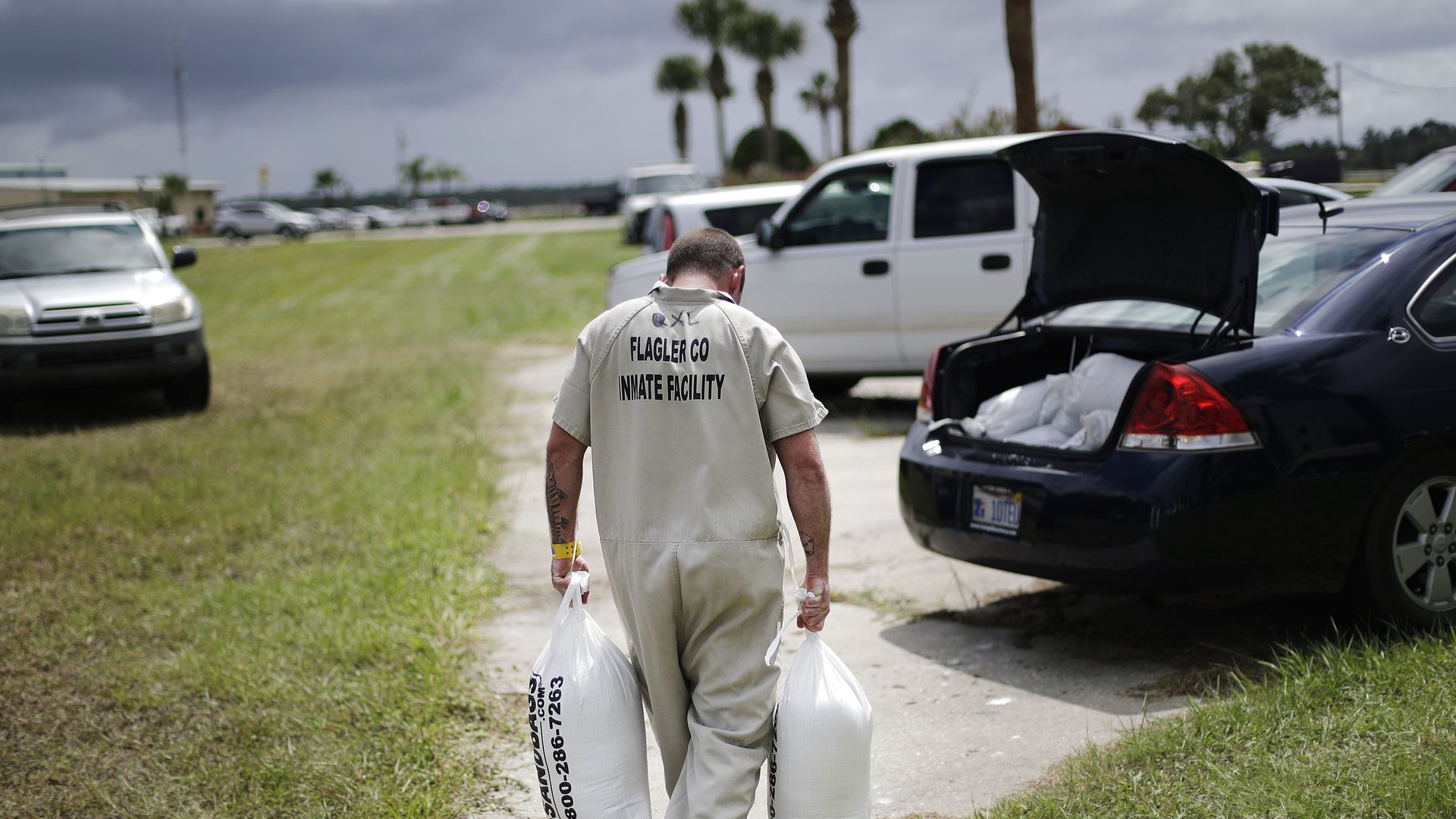One of the largest evacuations in US history left thousands of inmates behind
The evacuation in the run-up to Hurricane Irma is billed as one of the largest in US history, with more than 6.5 million people in Florida ordered to leave their homes. The state also carried out its most extensive prisoner evacuation ever, moving more than 7,000 to safer facilities.


The evacuation in the run-up to Hurricane Irma is billed as one of the largest in US history, with more than 6.5 million people in Florida ordered to leave their homes. The state also carried out its most extensive prisoner evacuation ever, moving more than 7,000 to safer facilities.
Not everyone behind bars in Florida was moved to higher ground. According to Vice News, nearly 4,500 inmates in Miami-Dade county’s federal, state, and local facilities in officially designated evacuation zones were not relocated.
It’s unclear exactly what the conditions in those institutions are after Irma—Miami-Dade, spared the brunt of the storm, experienced serious flooding, building damage, and power outages. Ashley Cook, press secretary for the Florida Department of Corrections (DOC), told Quartz each facility has checked in, reporting that “inmates and staff have food, water and secure conditions” as officials make initial assessments about damage. According to the federal Bureau of Prison’s website, the destruction was limited.
The DOC had told The Tampa Bay Times that inmates at the prisons deemed safest in the storm would be sheltered in place, and that some would even be moved to facilities in evacuation zones that were expected to hold up well against the wind and the flooding.
The paper points out that cramming inmates together in a limited number of facilities comes at a volatile time for Florida’s incarceration system. In August, all of Florida’s state prisons were placed on lockdown due to fears of a widespread revolt, after heightened gang activity.
(One sheriff, Grady Judd of Polk County, made national news when he tweeted that his officers posted at storm shelters would be checking for warrants on those seeking refuge, and said they should turn themselves in so they could shelter in the local jail.)
Locked up to hunker down
Evacuating inmates comes with significant downsides, and lessons from the past—including some just a few days old, from hurricane-hit Texas—show just how dire storms can be for those who remain in its path, locked in with no way out.
Initial reports from the massive inmate evacuation as a result of Hurricane Harvey suggested that it went smoothly, at least according to authorities. Accounts from inmates suggest that this was far from the case in some instances.
Sherrard Williams, serving a life sentence in Connally Unit, a maximum security prison in Karnes County, Texas, told The New Yorker about the conditions in recent days:
“When the water got cut off, you couldn’t use the restrooms in the cell. Now you gotta watch what you eat, you gotta watch what you drink. They came around with some water and brought us sack lunches—sandwiches, things like that. I couldn’t eat because it was going to make me use the restroom, and then the whole cell is gonna be messed up.”
Loved ones of inmates at a federal prison in Beaumont, Texas, which also was not evacuated, told Buzzfeed that the prisoners had to defecate in bags distributed by guards. They were severely dehydrated, according to reports. After inmates complained about the conditions, their communication options were reportedly limited.
Both Texas and Florida, states with massive prison populations, have gone through similar situations in the past. In 2008, during Hurricane Ike, Galveston County, local authorities did not evacuate its jail, leaving inmates in dismal conditions. In 1992, one of the Florida prisons that has not been evacuated for Irma, was completely devastated by Hurricane Andrew.